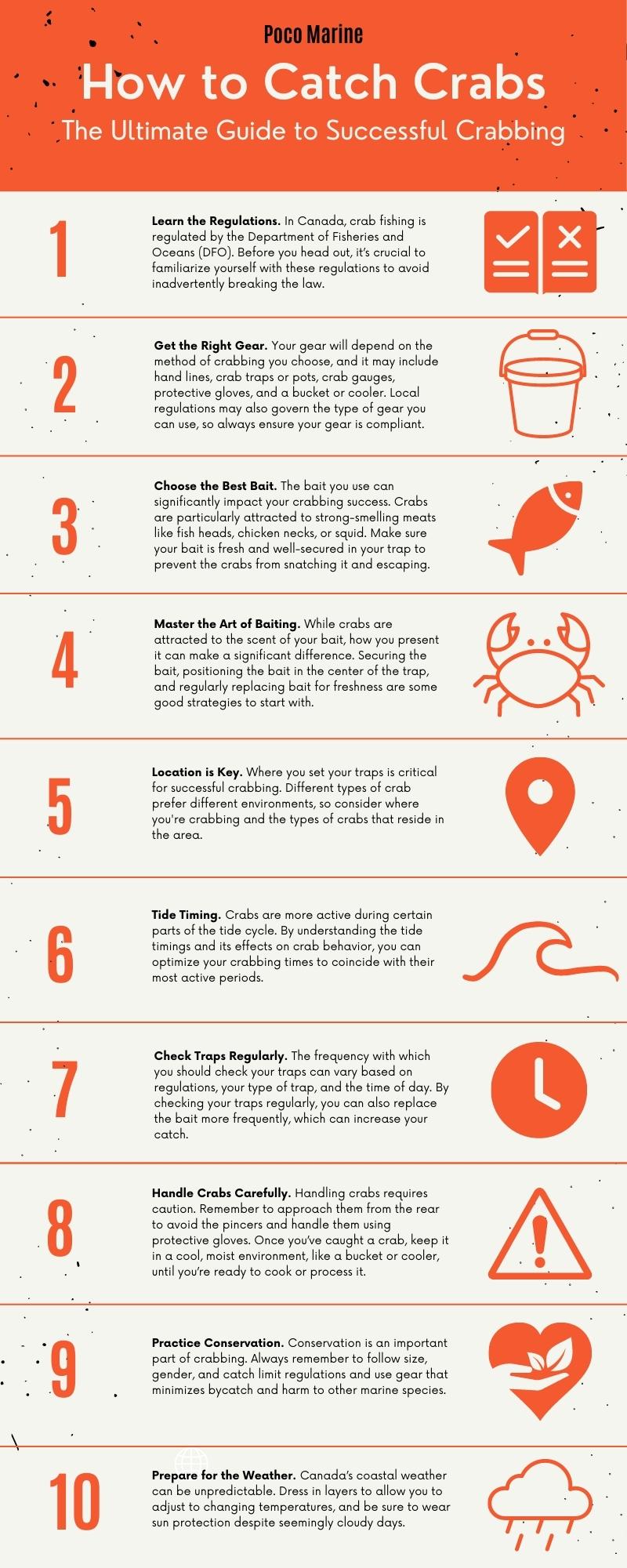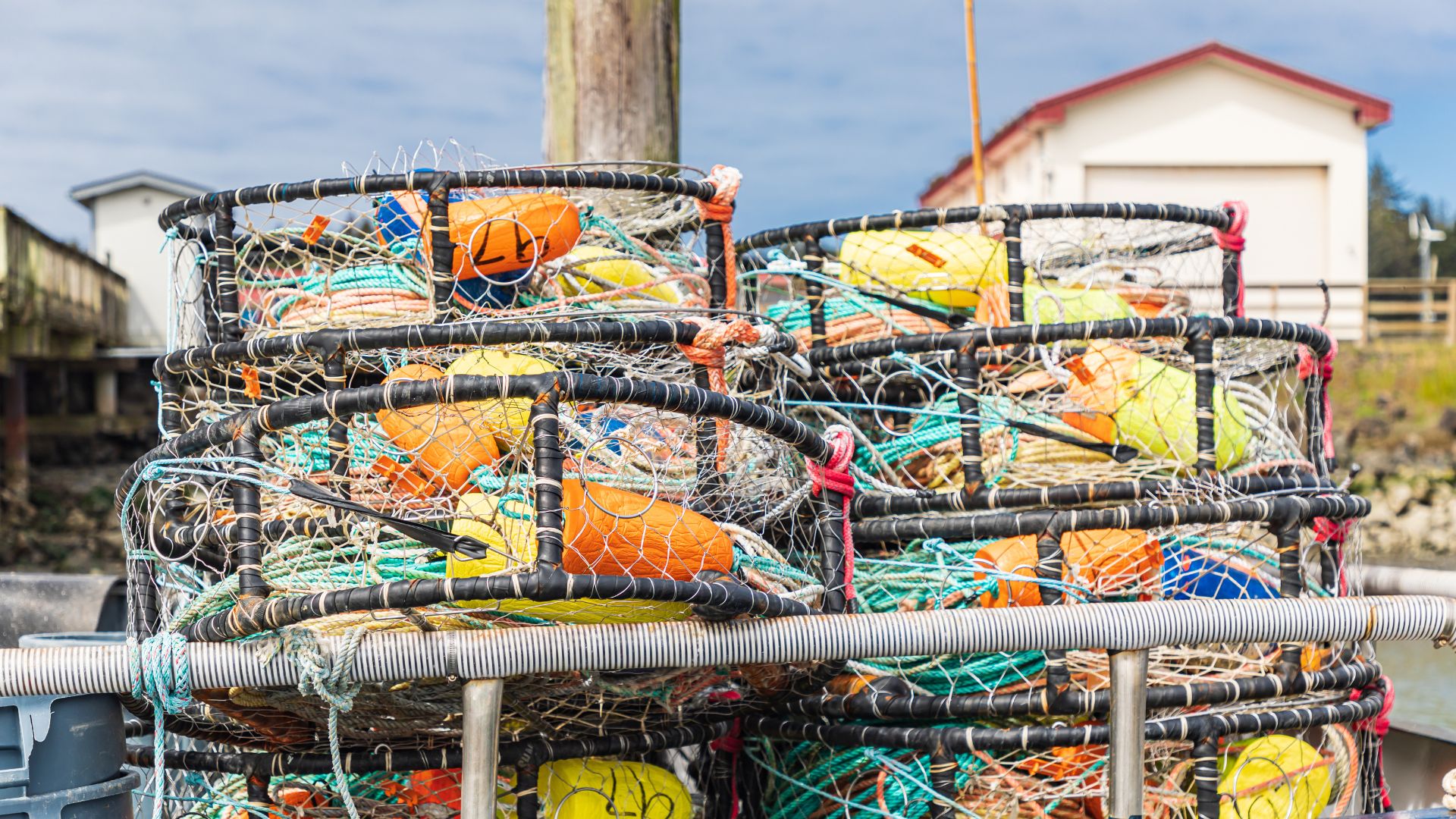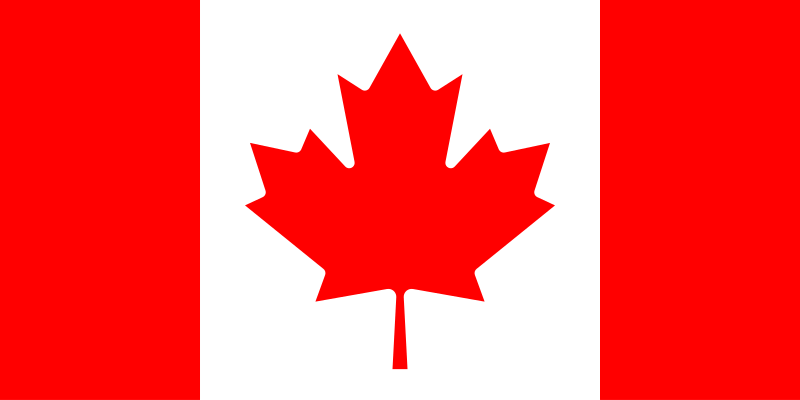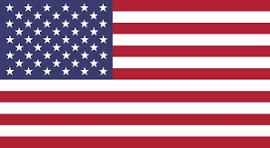Are you captivated by the allure of the sea and the thrill of the catch? Then embarking on the adventure of crabbing might be the perfect activity for you. Canada, with its vast coastline teeming with a variety of crab species, presents an excellent playground for this outdoor pursuit. However, the art of catching crabs involves more than simply casting a trap into the water. There are methods to learn, regulations to follow, and of course, the unpredictability of nature to contend with. This comprehensive guide on how to catch crabs in Canada will equip you with the knowledge and strategies you need to embark on this exciting venture. Whether you’re a seasoned angler looking to diversify your skills or a novice to the world of crabbing, we’re here to help make your crab-catching adventure a success.

1. Learn the Regulations:
In Canada, crab fishing is regulated by the Department of Fisheries and Oceans (DFO). Before you head out, it’s crucial to familiarize yourself with these regulations to avoid inadvertently breaking the law. The regulations can vary by region and species, but they generally encompass the following aspects:
- Licenses: A recreational fishing license is usually required to crab fish in Canada. You can typically apply for a license online or in-person at designated locations.
- Fishing Season: The crab fishing season varies by region and species. For example, Dungeness crab season might be different than the Rock crab season. Some areas may also have closures to protect the crab population during their breeding periods.
- Catch Limits: There may be daily catch limits, which restrict the number of crabs you can retain in a day.
- Size and Gender Restrictions: Regulations often specify the legal size of crabs that can be kept, and sometimes, only male crabs can be retained to protect the breeding population.
Violation of these regulations can result in hefty fines, so it’s always better to be aware and respectful of the rules.

2. Get the Right Gear:
Your gear will depend on the method of crabbing you choose, and it may include:
- Hand Lines: This is the simplest method where you tie your bait to the end of a weighted line. When a crab grabs the bait, you slowly pull the line in. This method requires a lot of patience and finesse.
- Crab Traps or Pots: These are specially designed to allow crabs to enter but not exit. They are dropped to the seabed with bait inside and hauled up after a certain duration. They are generally more efficient for catching a larger number of crabs.
- Crab Gauge: This is a measuring tool used to ensure the crabs you’ve caught are of legal size.
- Protective Gloves: Crabs have sharp pincers that can inflict painful injuries, so gloves are essential.
- Bucket or Cooler: This is used to store the crabs after they’re caught. It’s important to keep them cool and moist.
Remember, local regulations may also govern the type of gear you can use, so always ensure your gear is compliant.
3. Choose the Best Bait:
The bait you use can significantly impact your crabbing success. Crabs are scavengers and are particularly attracted to strong-smelling meats. Here are some popular choices:
- Fish Heads or Carcasses: Fish waste can be very effective, especially from oily fish like mackerel or herring.
- Chicken Necks or Legs: Chicken is tough and stays on the bait hook well. The oily smell also attracts crabs.
- Squid: Squid is another robust bait option that stands up to pecking from smaller marine creatures.
- Commercial Crab Bait: These are ready-made baits that are available in tackle shops. They are made to imitate the smell and taste of the crabs’ favorite foods.
Always ensure your bait is fresh and well-secured in your trap to prevent the crabs from snatching it and escaping.
4. Master the Art of Baiting:
While crabs are attracted to the scent of your bait, how you present it can make a significant difference. Here are some strategies:
- Secure the Bait: Crabs are opportunistic feeders, so if they can eat the bait from outside the trap, they will. Secure your bait within a bait box or bag, or tie it tightly so it’s hard for the crabs to pull away without getting inside the trap.
- Bait Positioning: Place the bait in the center of your trap. This encourages the crabs to move further into the trap, increasing the chance they’ll be caught when you lift it.
- Bait Freshness: Replace your bait regularly. Once it has been in the water for a while, it loses its scent and attractiveness. Fresh bait is always the best option for enticing crabs into your trap.
5. Location is Key:
Where you set your traps is critical for successful crabbing. Crabs are often found in areas with plenty of structures to hide. They also prefer various types of seabed environments:
- Rocky or Weedy Areas: Crabs like to hide amongst rocks and weeds. Look for areas with abundant underwater vegetation or rocky bottoms.
- Mud Flats and Estuaries: Crabs often bury themselves in the mud during the day and come out at night to feed. Estuaries can also be great spots due to the abundant food supply brought in by tidal flows.
- Sandy Bottoms: Some species of crab, like Dungeness crabs, prefer sandy bottoms, especially in areas where the sand meets rockier substrates.
Remember to place your traps or lines where crabs are likely to be moving around, but also ensure they’re not in the path of heavy boat traffic or other dangers.
6. Tide Timing
Crabs are more active during certain parts of the tide cycle:
- High Tide: Many crabs are most active during high tide. They use the incoming tide to move around in search of food. This is an excellent time to set your traps.
- Low Tide: Crabbing during low tide can also be productive, especially when the tide begins to come in.
- Slack Tide: The period between high tide and low tide (and vice versa) is called slack tide. The water’s movement slows during this time, and crabs are less active. It’s generally less productive for crabbing.
By understanding these tides and their effects on crab behavior, you can optimize your crabbing times to coincide with their most active periods. Remember that safety should always be your priority, so always pay attention to tide times to prevent getting stranded or caught in strong currents.
7. Check Traps Regularly
The frequency with which you should check your traps can vary based on a few factors:
- Regulations: Some areas have regulations specifying how often traps must be checked. This is typically to ensure that undersized or female crabs, or other non-target species, are returned to the water promptly.
- Type of Trap: If you’re using a trap that crabs can enter and exit freely (like a ring net), you’ll need to check more often than if you’re using a trap they can’t escape from (like a crab pot).
- Time of Day: Crabs are often more active at night, so traps set in the evening might need to be checked earlier in the morning.
By checking your traps regularly, you can also replace the bait more frequently, which can increase your catch.
8. Handle Crabs Carefully:
Handling crabs requires caution to avoid their sharp, strong pincers. Here are a few tips:
- Approach from the Rear: Always approach a crab from the back to avoid the pincers. If you’re picking up the crab, lift it from the rear as well.
- Wear Protective Gloves: Sturdy, thick gloves can help protect your hands from potential pinches.
- Keep Crabs Cool: Once you’ve caught a crab, keep it in a cool, moist environment, like a bucket or cooler, until you’re ready to cook or process it.
9. Practice Conservation
Conservation is an important part of crabbing:
- Follow Regulations: By following size, gender, and catch limit regulations, you’re helping to ensure a sustainable crab population for future generations.
- Use the Right Gear: Using gear that minimizes bycatch and harm to other species is another way to contribute to conservation.
- Limit Your Catch: Just because you can legally take a certain number of crabs doesn’t mean you should. Only keep what you need.
10. Prepare for the Weather
Canada’s coastal weather can be unpredictable, so it’s essential to come prepared:
- Dress in Layers: Dressing in layers allows you to adjust to changing temperatures. Start with a moisture-wicking base layer to keep you dry, add an insulating middle layer for warmth, and finish with a waterproof outer layer to protect against rain or sea spray.
- Wear Sun Protection: The sun’s rays can be strong even on cloudy days. Wear a hat and sunglasses, and apply sunscreen.
- Bring Safety Equipment: Depending on where you’re crabbing, this might include a life jacket, a first aid kit, a VHF radio, and flares. Always tell someone where you’re going and when you expect to return.
Venturing into the vast Canadian waters to catch crabs is a unique experience that blends the serenity of nature with the exhilaration of the chase. The knowledge and strategies we’ve shared in this guide are designed to enhance your understanding of how to catch crabs effectively and responsibly. By respecting local regulations, selecting the right gear, choosing the best bait, and knowing when and where to place your traps, you will improve your chances of a bountiful catch and contribute to the sustainability of the crab population. Remember, the ultimate reward in crabbing is not just the catch itself, but the rich experiences and lifelong memories made along the way. So, head out, cast your line, and let the crabbing adventure enrich your love for the great Canadian outdoors.


